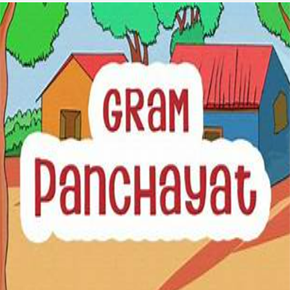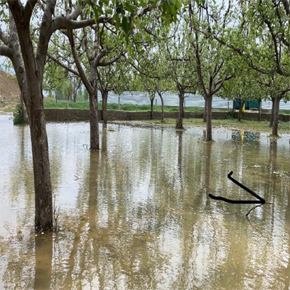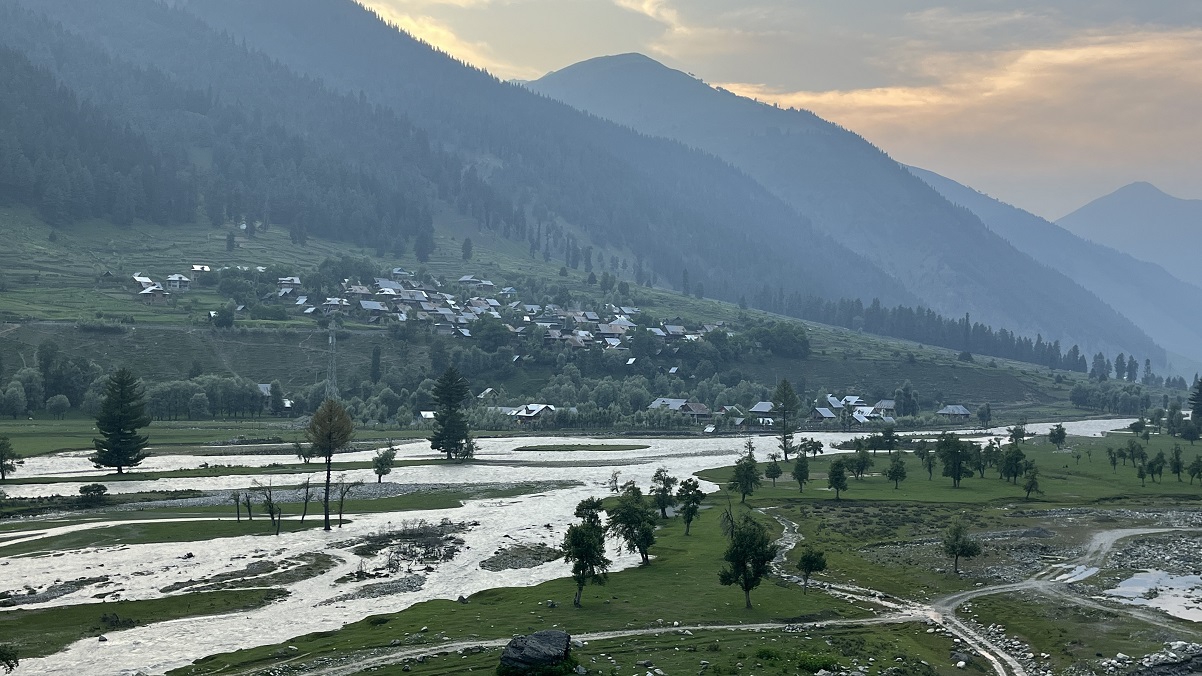Govt must explore solar energy to irrigate Kandi areas of J&K , supplement drinking water needs for migratory population.
HALF of the world's drinking water sources come from Ground Water. Around 40 % of the irrigation facilities are also supplemented by ground water across the world which sustains ecosystems, maintains the base flow of rivers and prevents land subsidence and seawater intrusion. Groundwater is an important part of the climate change adaptation process and is often a solution for people without access to safe water.
During its 30th meeting in Rome, between Jan 31st to Feb 1st 2019, the headquarters of the International Fund for Agricultural Development (IFAD), the UN Water (an interagency mechanism of the United Nations) adopted the theme for 2022 “Groundwater: making the invisible visible”. The theme was actually proposed by the International Groundwater Resources Assessment Centre (IGRAC) which is a UNESCO centre that works under auspices of World Meteorological Organisation (WMO) and is supported by the Government of The Netherlands.
During the 30th UN-Water meeting in Rome participants discussed the implementation of Sustainable Development Goal (SDG-6) which is related to clean water and sanitation. Participants also addressed ongoing work on SDG 6 indicators and upcoming global awareness-raising events.
In Spite of the fact that enormous groundwater is available in different nations, this invisible gift of nature is out of sight and out of mind for most of the human population. In many areas of Jammu & Kashmir where we have scarcity of drinking water or not enough water is available for irrigation especially in the areas located on hills and Karewas (wodder), authorities can explore pumping up the ground water. In many hilly areas of Chenab and Pir Panjal regions of J&K there are in fact rivers , canals and streams full of water but that is of no use for the population living on top of hills like in Ramban , Doda , Kishtwar , Rajouri or Poonch districts. In many areas the J&K Govt has set up huge borewells under various schemes , but still a lot needs to be done. The uncontrolled and unscientific human activities, urbanisation and population growth and climate variability are rapidly increasing the pressure on groundwater resources especially in Indian states of Delhi , Haryana , Maharashtra or Madhya Pradesh.
Using solar energy to pump out water
The solar water pump market has been growing significantly for the last several years. In the next three to five years due to the increasing application of solar based water pumps , motors in the agriculture sector, a huge growth in this sector is expected. In many states Governments are giving a good amount of subsidy to farmers for setting up solar water pumps. These water pumps are easy to install due to which it is becoming popular among the end user. In India, the solar water pump is mainly used for irrigation and drinking purposes. The solar water pump of capacity 5 HP (horsepower) can deliver about 1,24000 litres of water per day. Nowadays there are portable solar water pump sets. The solar panels and motor can be taken back by the farmers with them once they are done with irrigation work and the panels can be further used for lighting their homes at night. In India the farmers currently irrigate their fields with more than 30 million water pumping machines. Out of these, 22 million pump-sets operate on electricity, 10 million pumps are diesel based and only 3.50 lakh water pumps work on solar energy. In Jammu & Kashmir, I haven't come across any solar based water pumping machines in any district till date. These machines can be of great use to apple growers of Kashmir as well. The pump-sets that operate on electricity (grid connected) consume more than 18% of the total annual electricity consumption of India and diesel pump sets consume over 5.5% of the overall diesel import bill. In the year 2017-18 period, the annual electricity subsidy for agriculture alone amounted to over Rs 1.1 trillion (14.7 billion US dollars) and the annual diesel import bill towards agro-pump sets was estimated at around Rs 0.4 trillion (Indian Rupees)
India is one of the biggest agriculture-driven economies, making our farmers front-runners in the race. The agriculture sector alone accounts for nearly 18.33% of India’s electricity consumption. The use of solar-powered water pumps will thus help in reducing electricity consumption and shifting that load to clean energy. Maharashtra is significantly contributing in the Indian solar water pump market and the state offered approximately 95% of capital subsidy to farmers.
Last month, this author along with Chairperson of District Development Council Budgam Nazir Ahmad Khan were invited by a Non Governmental Organisation (NGO) to Maharashtra’s Amravati and Gadchiroli districts to see the implementation of Forest Rights Act (FRA). We saw a large number of solar water pumps having been established in many remote areas which is not only fulfilling the needs of drinking water for the local tribal population but the water from these pumps is significantly contributing towards agriculture and afforestation programmes as well. I had written a detailed piece on this issue
Challenges
New Delhi based Centre for Science and Environment (CSE) in a survey conducted around 2019 revealed that the solar water pump scheme started by the Maharashtra government for the farmers in the Vidarbha region had some flaws. The Maharashtra State Electricity Distribution Co Ltd had supplied solar pumps in Vidarbha under the Mukhyamantri Saur Krishi Pump Yojana (CMs solar energy pump scheme). Maharashtra Govt had targeted the deployment of one lakh off-grid solar powered agricultural pumps in 3 years in a phased manner with effect from January 1, 2019. A subsidy of 95 % was provided to the farmers under this project.
The CSE survey conducted in April 2019 revealed that the beneficiaries of solar pumps in the Buldhana district in Vidarbha were grossly under-utilised in the area. The survey revealed that the number of hours for irrigation actually decreased after the use of solar pumps, from nearly 800 hours to 600 hours. This was because of depleting ground water level in the Vidarbha region of Maharashtra. Down to Earth magazine had carried a detailed research article on this issue in its June 2019 issue.
In the case of Jammu & Kashmir , there won’t be any of such challenges as we have huge sources of ground water which only need to be explored. Unfortunately, we don’t have enough electricity available in the upper reaches of J&K and the ground water is thus not properly tapped. If the Government of J&K gives a similar subsidy as is provided by the Government of Maharashtra, our barren lands will get irrigated within a short span of time.
Under the Jal Jeevan Mission -JJM as well, the Government can explore providing community based solar pumps as have been provided in many districts of Vidarbha region of Maharashtra.
Conclusion
March 22nd is celebrated as World Water Day every year and it highlights a specific aspect of freshwater. As discussed above this year's annual theme is “Groundwater: making the invisible visible”. If solar based water pumps are provided to farmers of Jammu & Kashmir on subsidized rates , the same will have a great impact especially in unirrigated areas also referred to as Kandi belts in local parlance. The agricultural activities in J&K start in March and end by October and during this period we get enough sunshine, plus our water table is not too deep also. This is the only requirement for solar water pumps. The solar water pumps can be of great use for migratory populations like Gujjars , Bakerwals and Chopans as well who migrate to highland pastures during summer months. As I have observed, the drinking water sources in these pastures are located in low lying areas and the women have to travel a long distance to fetch drinking water. The pasturelands get very bright sunshine and I am sure the water in local springs , streams and or even underground water can be pumped up easily which will be of great use for the local migratory communities and their livestock as well.
Dr Raja Muzaffar Bhat is an Acumen Fellow.
He is Chairman Jammu & Kashmir RTI Movement & Anant Fellow for Climate Action.
Disclaimer: A collection of articles, stories, analyses and opinions from the anti-corruption movement or any other means curated by Jammu & Kashmir RTI Movement. All views and statements represent those of the authors, and do not necessarily reflect those of Jammu & Kashmir RTI Movement.

























































































